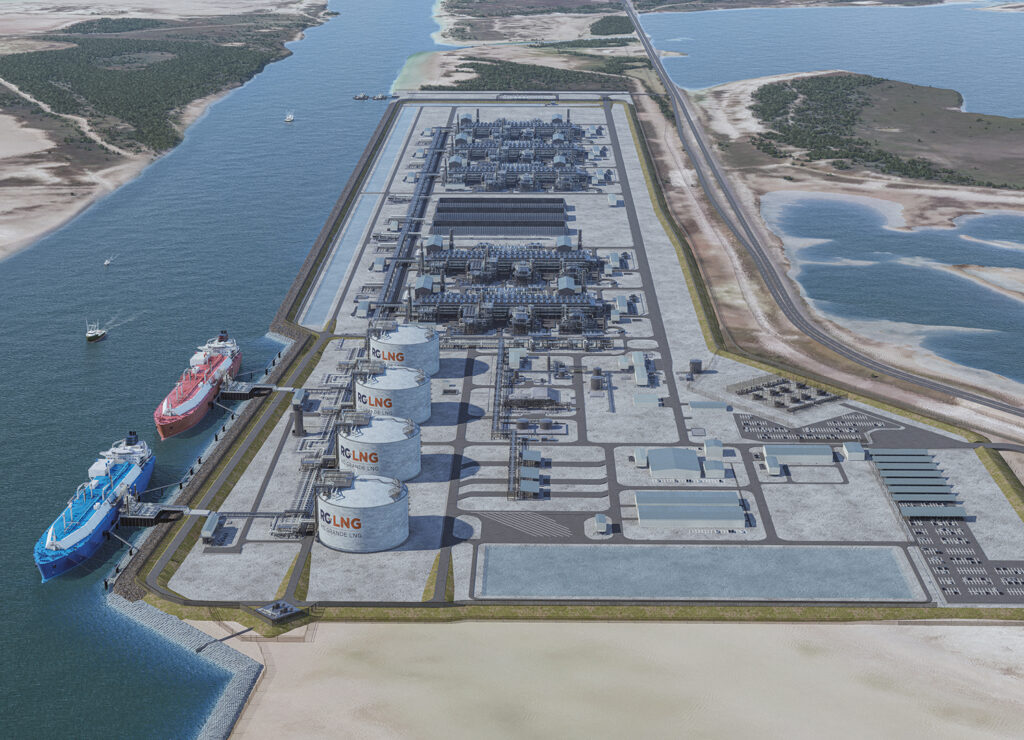
Delivering reliable, cost-effective and sustainable energy solutions
LNG 101
Liquefied natural gas (LNG) is natural gas in a liquid state. LNG is an odorless, non-flammable, non-toxic liquid that has been safely and securely shipped around the world for over 60 years. When natural gas is cooled into liquid form at approximately -260°F, it condenses by a factor of ~600x and can be efficiently transported over long distances in specially designed LNG vessels.
To learn about the journey of an LNG molecule from the wellhead to international markets, view the video below.

LNG Safety Facts
- LNG is natural gas cooled to approximately -260°F
- LNG occupies 1/600th the volume of gas LNG is not toxic, corrosive, explosive or flammable
- LNG looks like water and is colorless and odorless
- LNG cannot contaminate soil or water if spilled on land or in water
- LNG vaporizes and leaves no residue
- LNG shipping has occurred safely worldwide since first cargoes in 1964
Project Safety
- Proven, safe, reliable technology and design
- Comprehensive and best-practice safety policies, systems and procedures
Environment
NextDecade’s Rio Grande LNG project is designed to meet or exceed all environmental and other regulatory requirements, which include strict standards governing impacts on air, land, water and wildlife. The rigorous regulatory process and ongoing oversight by the Federal Energy Regulatory Commission (FERC) ensures these standards are met and maintained in accordance with the law.
- When LNG is vaporized and used as fuel, it reduces particulate emissions to near zero and carbon dioxide (CO2) emissions by up to 70 percent in comparison with other, heavier hydrocarbon fuels.
- When burned for power generation compared to other hydrocarbon fuels, the results are even more pronounced: sulfur dioxide (SO2) emissions are virtually eliminated and CO2 emissions are reduced significantly.
Frequently Asked Questions About LNG
What is LNG?
LNG is liquefied natural gas (methane) that has been cooled to an extremely cold temperature (-260° F/ -162.2° C). At standard atmospheric conditions, methane is a vapor, not to be confused with gasoline, which is a liquid.
How is LNG transported?
Specially designed vessels are used to transport LNG from export terminals to markets around the world. They have double hulls and are constructed of specialized materials that are capable of safely storing LNG at temperatures of -260° F/ -162.2° C.
How are U.S. LNG terminals permitted?
U.S. LNG export projects undergo a rigorous, multiyear review and permitting process overseen by the U.S. Federal Energy Regulatory Commission (FERC) and more than a dozen federal, state and local agencies, ensuring safe, responsible and environmentally sound economic development.
Regulatory Oversight of U.S. LNG
The U.S. Department of Energy (DOE) has regulatory responsibilities related to LNG. Companies that want to export natural gas must get authorization to do so from the DOE. DOE evaluates applications to export to free trade agreement (FTA) and non-FTA countries. The Federal Energy Regulatory Commission (FERC) has jurisdiction over the siting, construction, and operation of U.S. LNG export facilities. FERC’s review and permitting process includes a comprehensive review of the environmental, social, and economic impacts of proposed projects. The FERC, in cooperation with more than a dozen federal, state, and local agencies conducts this comprehensive review of proposed LNG projects before issuing permits. The FERC process is designed to ensure the safe and responsible development and operations of U.S. LNG export projects.
You are invited to participate in the FERC process. Please reference FERC Docket No. (CP16-454) when searching the FERC’s eLibrary.